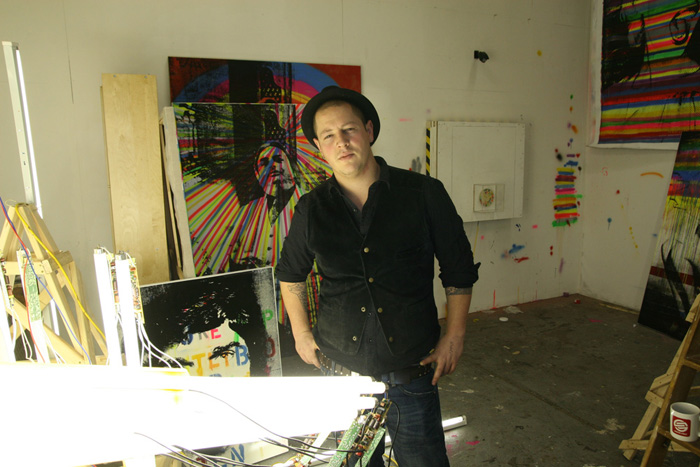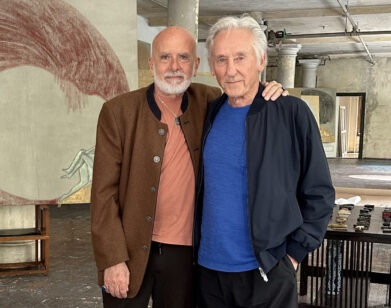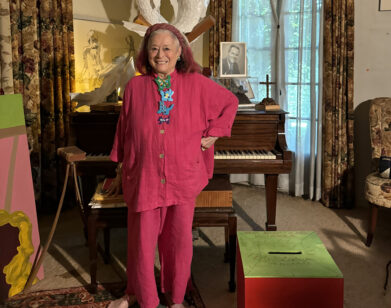Artist Zhivago Duncan Gives INTERVIEW 15 Minutes of Fame

Interview Magazine can claim a fair chunk of the credit (or blame) for contemporary, celebrity-crazed culture. And Berlin-based artist Zhivago Duncan is determined to give Interview its due. For “The Beautiful and the Damned,” an exhibition at Cologne’s Teapot Gallery this spring, Duncan is producing dozens of doctored images from the heydays of Halston and Studio 54 recorded in Andy Warhol’s Interview.
Duncan will be including the images in a limited edition book of individually hand screen-printed pages and exclusive interviews by Interviewmagazine.com contributor Arsalan Mohammad with Warhol superstars like Bob Colacello, Gerard Malanga, and Chris Makos.
Duncan first silk-screens the images from Interview as an overt homage to Warhol’s own technique. He then exaggerates his subjects’ features and obscures part of each image with large bands of biographical text taken from Wikipedia and Google, which he considers to be today’s organs of mass gossip.
PHOTO BY MAXIME BALLESTEROS
In contrast to Warhol’s bold, primarily graphic aesthetic, Duncan’s images appear as muddy and garbled as the manic, messy culture they represent. Where Warhol’s silk-screens are sleek and elegant, Duncan’s versions have the grungy energy of rock posters. As Duncan explains, “Certain paintings of both celebrities and unknowns have been treated with various varnishes and U.V. protective coatings so that eventually, with time, they will age and yellow, and the once glossy surface will crack leaving nothing but the protected vibrant colors beneath.” Even now, in the early stages of their decay, the images look like the end product of a badly digested cultural stew.
Duncan’s interest in Interview, however, derives from a more naive relationship to celebrity culture. When he was a child, Duncan’s family was utterly unmoored and the half-Syrian and half-Danish multi-media artist had never familiarized himself enough with a location to absorb ist pop fixations. He first learned of Interview when he discovered a stack of issues in the neighbouring Berlin studio of artist and lecturer Tristan Praniko.
Although Duncan depicts A-listers and has-beens alike, his interest is mainly the faded stars whose identity would stump even the savviest scholar of pop party-culture. “The images of vanished and faded ‘stars’ were the ones that really sparked the fire in me,” Duncan recounts. “They are the founding fathers and mothers of reality TV, only they never got enough credit for their long-lasting cultural impact.” Until now.






